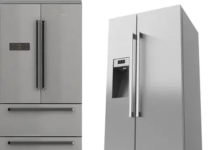Fire safety is a crucial aspect of any building’s infrastructure, particularly for multi-story structures where rapid response to fires can be life-saving. A dry riser system plays a critical role in fire suppression by allowing water to be transported quickly to the upper floors of a building. However, to ensure these systems work flawlessly in an emergency, regular dry riser servicing and dry riser repair are essential. Neglecting their upkeep can lead to disastrous consequences. This article highlights the importance of dry riser maintenance, repair, and the steps to keep fire safety systems in optimal condition.
What Is a Dry Riser System?
A dry riser system is a network of vertical pipes installed in multi-story buildings to supply water for firefighting purposes. Unlike wet risers, which are constantly filled with water, dry risers remain empty until they are connected to a fire engine during an emergency. This system is particularly effective for high-rise buildings, allowing water to reach higher levels quickly. To ensure these systems are reliable in emergencies, periodic dry riser servicing is critical.
Why Regular Dry Riser Servicing is Essential
Like any mechanical system, dry risers can degrade over time due to various factors such as corrosion, leaks, or general wear and tear. Regular dry riser servicing helps identify and address these issues before they become critical, ensuring the system’s efficiency when it’s needed the most. Servicing includes inspections, pressure tests, and flow rate evaluations to verify that the riser can handle the necessary volume of water during a fire emergency. This is not only a safety requirement but also a legal obligation for building owners in many regions.
How Often Should Dry Risers Be Serviced?
To ensure optimal performance, dry risers should be inspected at least every six months by a qualified technician. Comprehensive servicing, including pressure tests, should occur annually. Any delays in dry riser servicing can lead to unnoticed damage, which might result in system failure during a fire emergency. This regular maintenance is essential for both compliance with fire safety regulations and to provide peace of mind that your building’s fire suppression system is ready for action.
The Process of Dry Riser Servicing
Dry riser servicing involves a detailed inspection to ensure the system is fully operational and meets the required standards. The process usually includes:
- Visual Inspection: Technicians examine all the visible components, such as valves, inlets, outlets, and pipework, to check for signs of damage, corrosion, or blockage.
- Pressure Test: The system is pressurized to its working pressure to ensure it can handle the required water flow. This test helps to detect any leaks or pressure drops that could indicate a need for dry riser repair.
- Flow Test: Water is pumped into the riser system to check that it can adequately deliver water to higher floors. The flow rate is measured to ensure it meets the fire safety standards.
- Cleaning and Lubrication: Any dirt or debris found in the system is cleared out, and moving parts are lubricated to ensure smooth operation.
Regular maintenance ensures that all components of the dry riser are in excellent working condition, reducing the risk of failure during a fire emergency.
Addressing these issues as soon as they are detected can prevent more serious complications and ensure the fire safety system functions when needed most.
Conclusion
Ensuring that your dry riser system is well-maintained through regular servicing and repairs is vital for fire safety. By conducting routine inspections, addressing minor issues before they escalate, and ensuring compliance with fire safety regulations, you can protect both lives and property. For expert dry riser servicing and repair, consider reaching out to a trusted provider like Durcan Services, which offers comprehensive fire safety solutions across the UK. Visit durcanservices.co.uk for more information on how they can help secure your building’s fire safety system.




